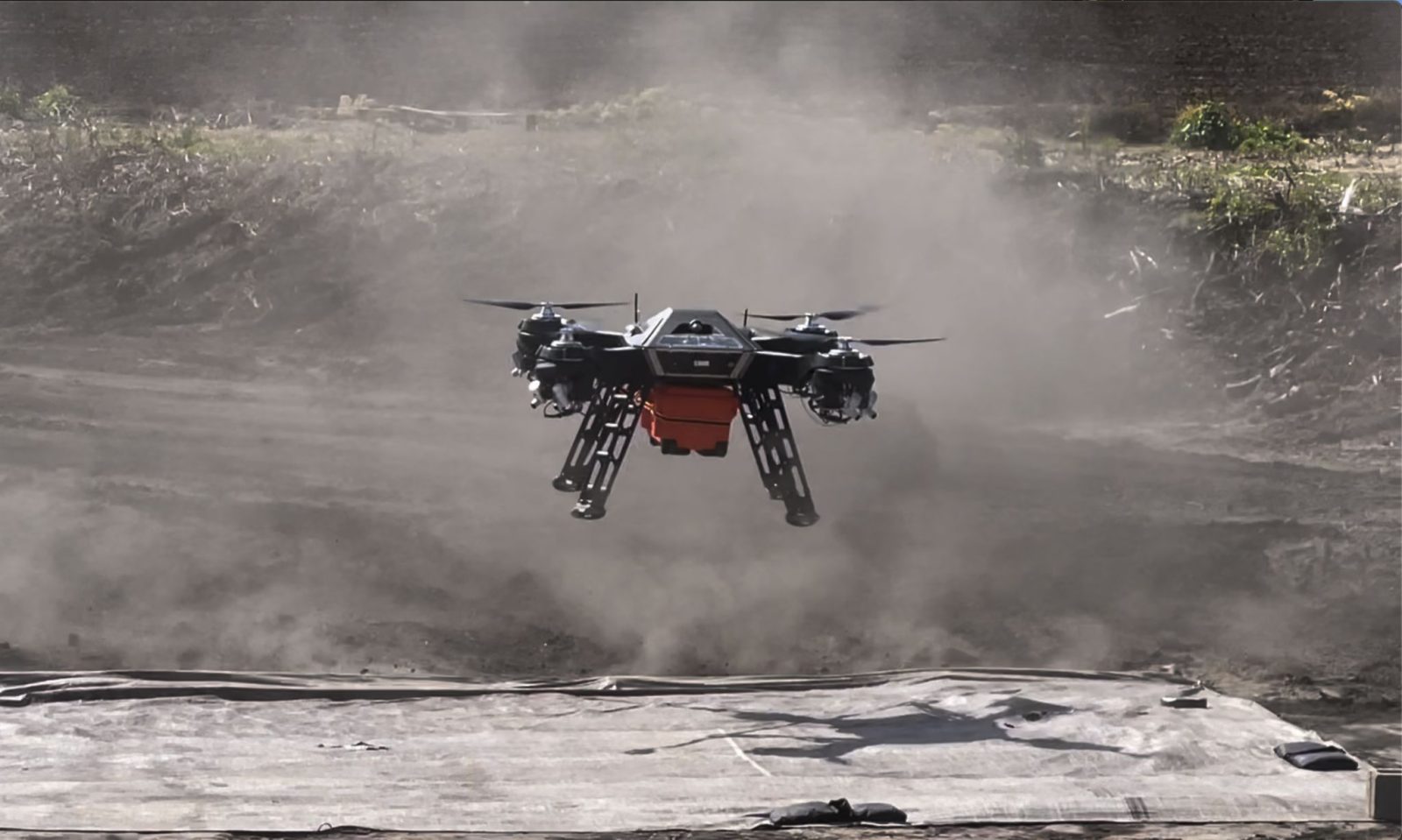
California heavy-lift UAV startup Parallel Flight Technologies has repeatedly demonstrated a desire to harness its boundary-pushing development of drone technology to objectives benefiting people and the planet – the most recent example being its new partnership with environmental NGO Island Conservation to preserve native flora and fauna under threat of extinction from invasive predators.
Based south of Santa Cruz, Parallel Flight continues to enhance the capabilities of its hybrid heavy-lift Firefly drone, and broaden the kinds of work its maximum seven-hour flight time and 100 lb. payload capacities can support. Though the UAV – which CEO Joshua Resnick has likened to an aerial pickup truck – is used by a variety of industrial and other enterprise clients, Parallel also prides itself on the extra muscle Firefly has provided critical humanitarian, medical, firefighting, and conservation missions – an activity it’s now looking to increase in its pairing with Island Conservation.
The tie-up with the environmental non-profit comes following Parallel Flight joining the USDA Wildlife Services‘ project to eradicate invasive rats destroying indigenous wildlife on Wake Island.
Read more: Parallel Flight’s Firefly heavy-lift drone to protect Wake Island from destructive rats
The choice of US officials in that was logical: Deployment of the heavy-lift drones and their mission-extending internal combustion engines and 60V, 5000 mAh batteries translates into more pellets deposited over wider areas during each outing. With that greater efficiency, meanwhile, comes increased accuracy, safety, and savings over having helicopters hover low over dangerous coastal target zones.
Now those long-endurance, heavy-lift Firefly capabilities are available to Island Conservation through its open-ended partnership with Parallel Flight in the effort to battle invasive species that account for 75% of reptile, bird, amphibian, and mammal extinctions around the globe. Even partial decimation of indigenous wildlife populations can have disastrous effects on ecosystems they’re part of.
Island Conservation proved the effectiveness of its innovative aerial approach to native wildlife protection in 2021, when its team successfully eliminated invasive rats whose destructive habits had brought two bird species close to extinction on a pair of Galápagos Islands.
Read more: Darwinian drones rid Galápagos Islands of invasive rats
Now Island Conservation can turn to Parallel Flight’s heavy-lift Firefly support whenever bigger drone muscles are needed in future projects, which may include those planned for the Virgin Islands’ Savana Island, the Palau Republic‘s archipelago, and others to come.
“Frequently, conducting invasive species eradications in order to protect these ecosystems involves huge logistical and resource challenges,” explained David Will, head of innovation at Island Conservation. “Because of this, we have pioneered the use of drones in invasive rodent eradications to overcome the cost and skill barriers to conventional ground and helicopter-based approaches. However, we’ve reached the limits of what current all-electric drone technology can achieve.”
Read: After rats, Galápagos Islands drones combat invasive plants
Enter Parallel Flight. After turning many heads with Firefly’s heavy-lift and extended mission contributions to the work of firefighters battling proliferating wildfires across the US West, company CEO Resnick says he’s pleased to add efforts to help Island Conservation safeguard endangered species to the list of good work its drones perform.
“Welcoming Island Conservation, an extremely reputable and respected organization, as a partner is a multi-fold value add for Parallel Flight,” said Resnick. “This synergistic partnership will provide us access to directly impact global biodiversity initiatives by replacing helicopters and implementing our scalable technology for use across remote islands around the world. These types of use cases are a part of our DNA, and we are thrilled that this partnership will allow us to further act on our mission to save lives and protect the environment for future generations.”
FTC: We use income earning auto affiliate links. More.



Comments